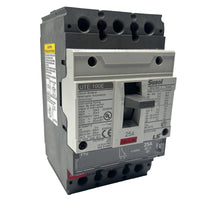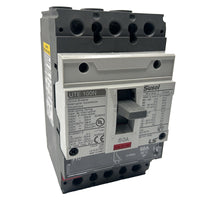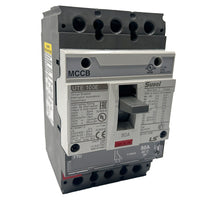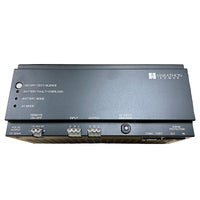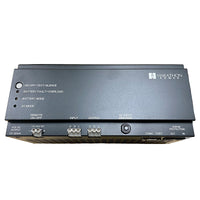
The electric vehicle (EV) market is rapidly growing, and a variety of EV products are now available to consumers. These products range from fully electric cars to hybrid vehicles and plug-in hybrids. Plug-in hybrid electric vehicles (PHEVs) are similar to hybrids, but they can be charged from an external power source, such as a charging station. PHEVs have a larger battery than hybrids and can be driven for longer distances on electric power alone.
In addition to cars, there are also electric bicycles, scooters, and motorcycles available on the market. These products offer a more environmentally friendly mode of transportation for shorter distances.
HOW DOES AN ELECTRIC MOTOR WORK
An electric motor works by converting electrical energy into mechanical energy. It does this by using the interaction between a magnetic field and an electric current to produce rotational motion. Here's a basic overview of how an electric motor works:
- A Magnetic Field: An electric motor has a stationary part called the stator and a rotating part called the rotor. The stator contains a permanent magnet or electromagnet that creates a magnetic field.
- An Electric Current: The rotor contains a wire coil that is connected to a power source. When an electric current flows through the coil, it creates an electromagnet.
- Interaction of Magnetic Fields: The interaction between the magnetic field from the stator and the magnetic field from the rotor's electromagnet causes the rotor to rotate. This is because a changing magnetic field will induce an electromotive force (EMF) in the coil, which will generate a current and create an additional magnetic field. The interaction between the two magnetic fields causes the rotor to rotate.
- Continuation of Rotation: The rotor continues to rotate as long as the electric current flows through the coil. The direction of rotation depends on the direction of the current and the orientation of the magnetic field.
- Control of Speed and Torque: The speed and torque of the electric motor can be controlled by changing the magnitude of the electric current flowing through the coil, by changing the strength of the magnetic field, or by using a control circuit.
This is a simplified explanation of how an electric motor works, and there are many different types of electric motors, each with its own unique design and operating principles. However, the basic principles outlined above apply to many types of electric motors.
MASS TRANSPORTATION GOING ELECTRIC
Canada has set ambitious targets to reduce greenhouse gas emissions and transition to a low-carbon economy. One of the key strategies to achieve these targets is to promote the electrification of transportation, including vehicles, public transit, and marine vessels. Here are some of the policies and initiatives related to Canada's electrification policy:
Zero-Emission Vehicle (ZEV) Mandate: In 2018, Canada introduced a ZEV mandate that requires automakers to sell a certain percentage of electric, hydrogen fuel cell, or plug-in hybrid vehicles each year. The goal is to have 100% of new light-duty vehicles sold in Canada be zero-emission by 2035.
Infrastructure Investments: The Canadian government has committed to investing over $300 million in electric vehicle charging and alternative fuel infrastructure across the country. This includes the installation of thousands of electric vehicle charging stations, hydrogen fueling stations, and investments in alternative fuel production.
Public Transit Electrification: The Canadian government has also committed to electrifying public transit systems across the country, including the purchase of electric buses and the electrification of rail and light rail systems.
Marine Vessels Electrification: The Canadian government has announced a plan to electrify the country's marine vessels, particularly those used for transportation of goods and people along coastal routes, as a means of reducing emissions from the marine sector.
Carbon Pricing: Canada has implemented a carbon pricing policy, which applies to fuels used for transportation, including gasoline and diesel. This policy provides an incentive for individuals and businesses to switch to low-carbon transportation options such as electric vehicles.
Overall, Canada's electrification policy aims to reduce greenhouse gas emissions from the transportation sector, which is one of the largest sources of emissions in the country. The policy also promotes the growth of the domestic electric vehicle industry and the development of a low-carbon transportation system that can support a sustainable economy.
Mass transportation is transitioning to electric power to reduce greenhouse gas emissions, improve air quality, and reduce dependence on fossil fuels. The transition is happening in various forms, including:

- Electric Buses: Many cities are replacing their diesel and gasoline-powered buses with electric buses. Electric buses emit less pollution, have lower operating costs, and provide a quiet and smooth ride.
- Electric Trains: Electric trains are becoming increasingly popular, particularly in urban areas, as they offer faster, smoother, and more energy-efficient transportation. Some countries, such as China and Germany, have large electric train systems that serve millions of people daily.
- Electric Trams and Streetcars: Trams and streetcars powered by electricity are becoming more common in cities around the world. They offer a clean, efficient, and sustainable mode of transportation that is well-suited to densely populated urban areas.
- Electric Ferries: Some cities are also using electric ferries for water transportation. These ferries offer a quiet and emissions-free alternative to diesel-powered vessels.
The shift to electric transportation is being driven by a combination of factors, including government incentives and regulations, declining costs of batteries and electric vehicle (EV) technology, and increased public demand for sustainable transportation options. However, there are also challenges, including the need to develop robust charging infrastructure, integrate EVs into the electric grid, and address the environmental impact of battery production and disposal.
HEAVY MACHINERY IS ALSO TRANSITIONING TO ELECTRIC
- Electric Excavators: Excavators powered by electricity are becoming more common in construction and mining sites. Electric excavators offer reduced emissions and improved fuel efficiency compared to traditional diesel-powered excavators.
- Electric Forklifts: Electric forklifts are replacing traditional diesel and gasoline-powered forklifts in warehouses and distribution centers. Electric forklifts offer lower emissions, reduced operating costs, and improved performance compared to traditional forklifts.
- Electric Bulldozers: Some manufacturers are developing electric bulldozers for construction and mining sites. Electric bulldozers offer improved fuel efficiency, reduced emissions, and reduced operating costs compared to traditional diesel-powered bulldozers.
- Electric Cranes: Electric cranes are becoming more common in construction sites, ports, and industrial facilities. Electric cranes offer improved fuel efficiency, reduced emissions, and lower operating costs compared to traditional diesel-powered cranes.
The shift to electric heavy machinery is being driven by similar factors as the shift to electric transportation, including government incentives and regulations, declining costs of batteries and electric vehicle (EV) technology, and increased public demand for sustainable transportation options.
THE IMPACT EV HAS ON THE FUTURE:

- Environmental Benefits: EVs have the potential to significantly reduce greenhouse gas emissions and air pollution. Unlike traditional gasoline-powered vehicles, EVs run on electricity, which can be generated from renewable sources such as solar, wind, or hydroelectric power. This means that EVs have the potential to greatly reduce the amount of carbon dioxide and other pollutants that are released into the atmosphere, which in turn helps to reduce the impacts of climate change.

- Energy Security: By reducing our dependence on imported oil, EVs can help to improve energy security. Since electricity can be generated domestically from a variety of sources, including renewable energy, EVs can help to reduce our reliance on foreign oil and the geopolitical tensions that often come with it.

- Cost Savings: While EVs may have a higher upfront cost than traditional gasoline-powered vehicles, they are often cheaper to operate over the long term. This is because electric motors are more efficient than gasoline engines, and electricity is generally cheaper than gasoline. Additionally, since EVs have fewer moving parts than traditional vehicles, they often require less maintenance and repairs.

- Technological Innovation: The development and adoption of EVs is driving technological innovation in the automotive industry. This includes the development of new battery technologies, charging infrastructure, and vehicle-to-grid technology, which allows EVs to feed excess energy back into the grid during times of peak demand.

- Health Benefits: EVs can help to improve air quality, which can have significant health benefits. Air pollution is a major cause of respiratory problems, heart disease, and other health issues. By reducing the amount of pollution that is emitted from vehicles, EVs can help to improve public health and reduce healthcare costs.

- Noise Pollution: Electric vehicles are much quieter than traditional gasoline-powered vehicles, which can help to reduce noise pollution in cities and suburban areas. This is particularly important for densely populated areas where noise pollution can have a significant impact on quality of life.

- Sustainable Transportation: EVs are an important part of a larger shift toward more sustainable transportation options. By reducing our dependence on fossil fuels and promoting the use of renewable energy sources, we can create a more sustainable transportation system that is better for the environment and for future generations.

- Job Creation: The shift toward electric vehicles is creating new job opportunities in areas such as battery manufacturing, charging infrastructure installation, and vehicle assembly. This can help to support local economies and create new opportunities for workers in a variety of industries.

- Energy Flexibility: Electric vehicles can help to create a more flexible energy system by allowing for greater integration of renewable energy sources. For example, EVs can be charged during times when renewable energy is abundant, such as during the day when solar energy is at its peak. This can help to reduce the need for fossil fuel-based power plants and increase the use of renewable energy.







